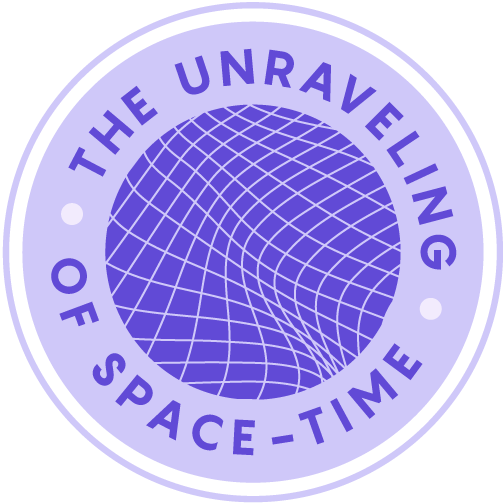Can Space-Time Be Saved?
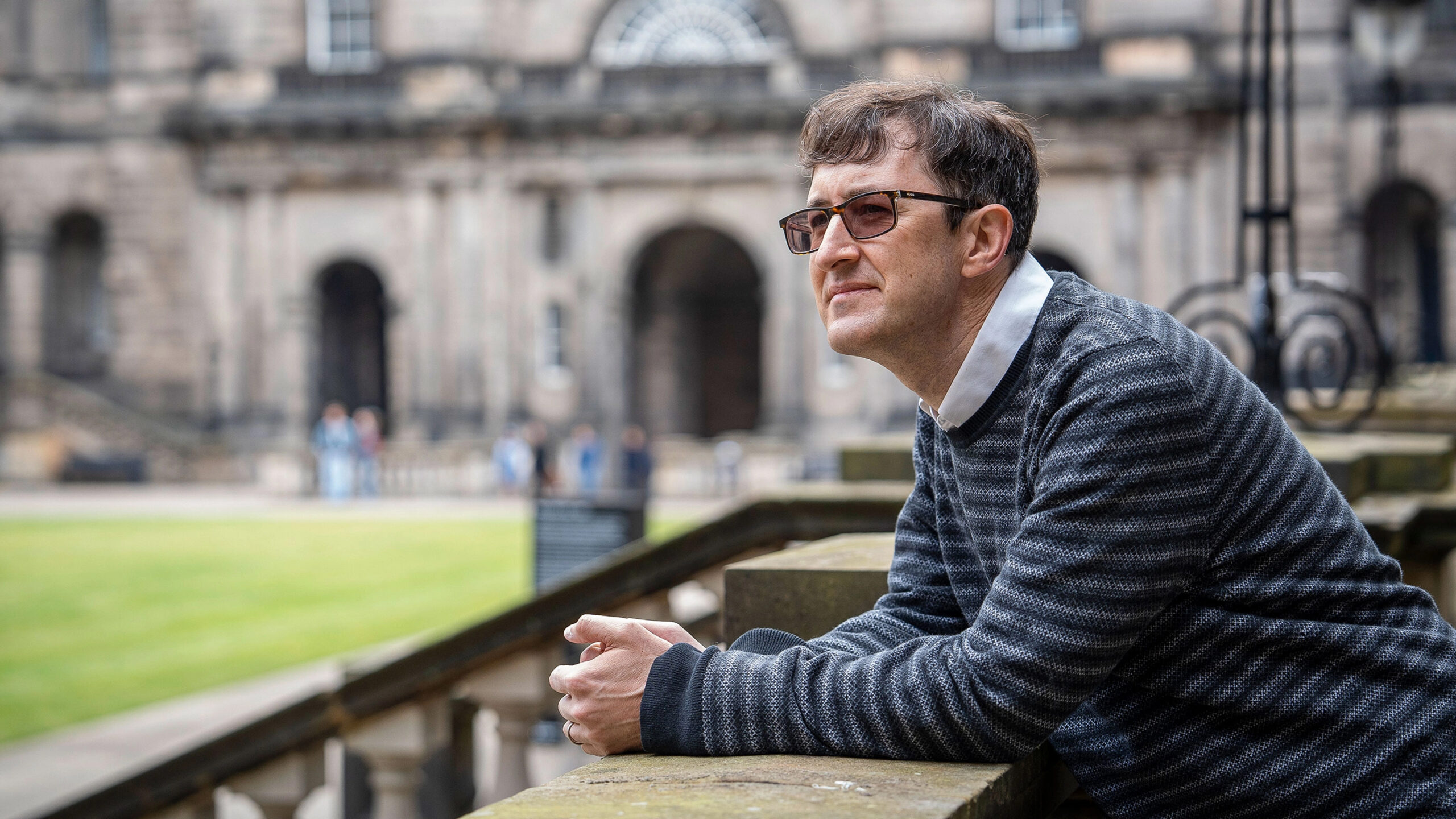
Latham Boyle, a theoretical physicist at the University of Edinburgh, holds out hope that “maybe we could get a quantum version of something quite close to general relativity after all.”
Sophie Gerrard for Quanta Magazine
Introduction
Most of today’s leading theoretical physicists have a shared perspective about what the next revolution in physics will look like. They think reconciling Albert Einstein’s general theory of relativity with quantum mechanics will require transcending the notion of space-time. Einstein’s theory attributes the force of gravity to curves in the space-time fabric, but beneath this fabric they hope to find a quantum theory of gravity expressed in terms of entirely different, more fundamental concepts.
Latham Boyle is an exception. An American theoretical physicist currently based at the University of Edinburgh, Boyle isn’t convinced that discovering the next theory of physics will involve a dramatic unraveling of the space-time fabric.
Rather, he thinks space-time might get by with some patching up.
An exploratory mindset guides Boyle to his unorthodox view. Where many physicists specialize, he skips from problem to problem, publishing papers in recent years on (among other things) why satellite orbits might mimic so-called time crystals, how certain tiling patterns resemble error-correcting codes for quantum computers, and why we haven’t heard from aliens.
His work across mathematics, cosmology and quantum physics has led him to suspect that instead of blowing up space-time, physicists might do better to focus on its symmetries — an abstract way of defining things. A square, for instance, is the thing that looks the same after being rotated or reflected in specific ways, such as a 90-degree rotation. Going deeper, it’s possible to define elementary particles like electrons as the things that stay the same when shifted or rotated in space-time. Each particle of nature has additional “internal” symmetries, ways of transforming features such as electric charge. The list of symmetries that define the known elementary particles is called the Standard Model of particle physics.
Boyle seeks the source of the Standard Model symmetries in the arcane arithmetic of numbers called the octonions, together with a retooled version of space-time known as twistor space.
Quanta Magazine caught up with him a couple of times this year over Zoom to hear why space-time might be fundamental after all, and what the symmetries of the particles zipping around in it might suggest. The interviews have been condensed and edited for clarity.
You study particles and the origin of the universe, but also mathy things like symmetries and number systems. What gets you out of bed in the morning?
While I’m very fascinated by certain mathematical questions, I’m ultimately a physicist. If I had to choose the two questions that I would most like to know the answer to before I die, they would be: “Where does the Standard Model of particle physics come from?” and “What is the right theory of the early universe?”
I often hear theorists say that space-time is “emergent,” or “doomed.” What do those phrases mean?
I think they suggest that space-time will be replaced by something radically different and, in particular, something genuinely inequivalent. But what? To me, the relevant hints still seem too speculative and loose. By contrast, other hints we have about the detailed patterns and structure in the Standard Model of particle physics seem so much more informative. I would guess that the next step forward is more likely to come from thinking about those.
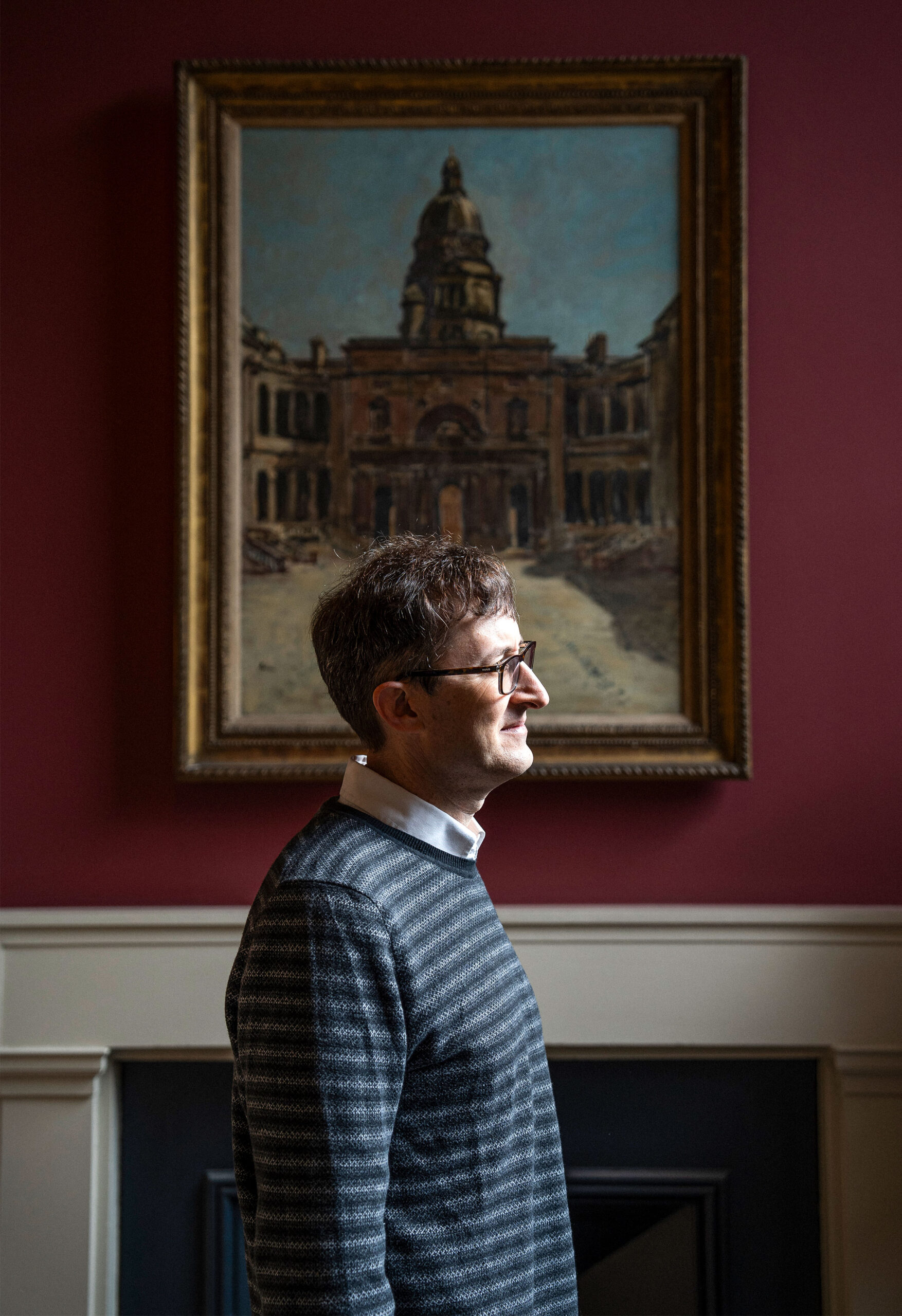
Boyle in the foyer of Old College at the University of Edinburgh.
Sophie Gerrard for Quanta Magazine
What’s one of those loose hints that space-time is doomed?
Well, the traditional view is that you don’t expect the space-time fabric of Einstein to be fundamental because when you try to apply the normal quantum rules to Einstein’s theory, you find that it can’t handle events happening at very short distances. That seems to suggest it’s not a complete theory, and that a very different theory should eventually take its place.
Maybe so. But I worry that we could be jumping to a too-radical conclusion by prematurely assuming we know the precise quantum rules we should be applying to gravity. There is interesting recent work by the physicist John Donoghue and others showing how certain modest modifications in how we “quantize” the theory might fix the problem. So maybe we could get a quantum version of something quite close to general relativity after all, retaining the ordinary space-time fabric we know and love.
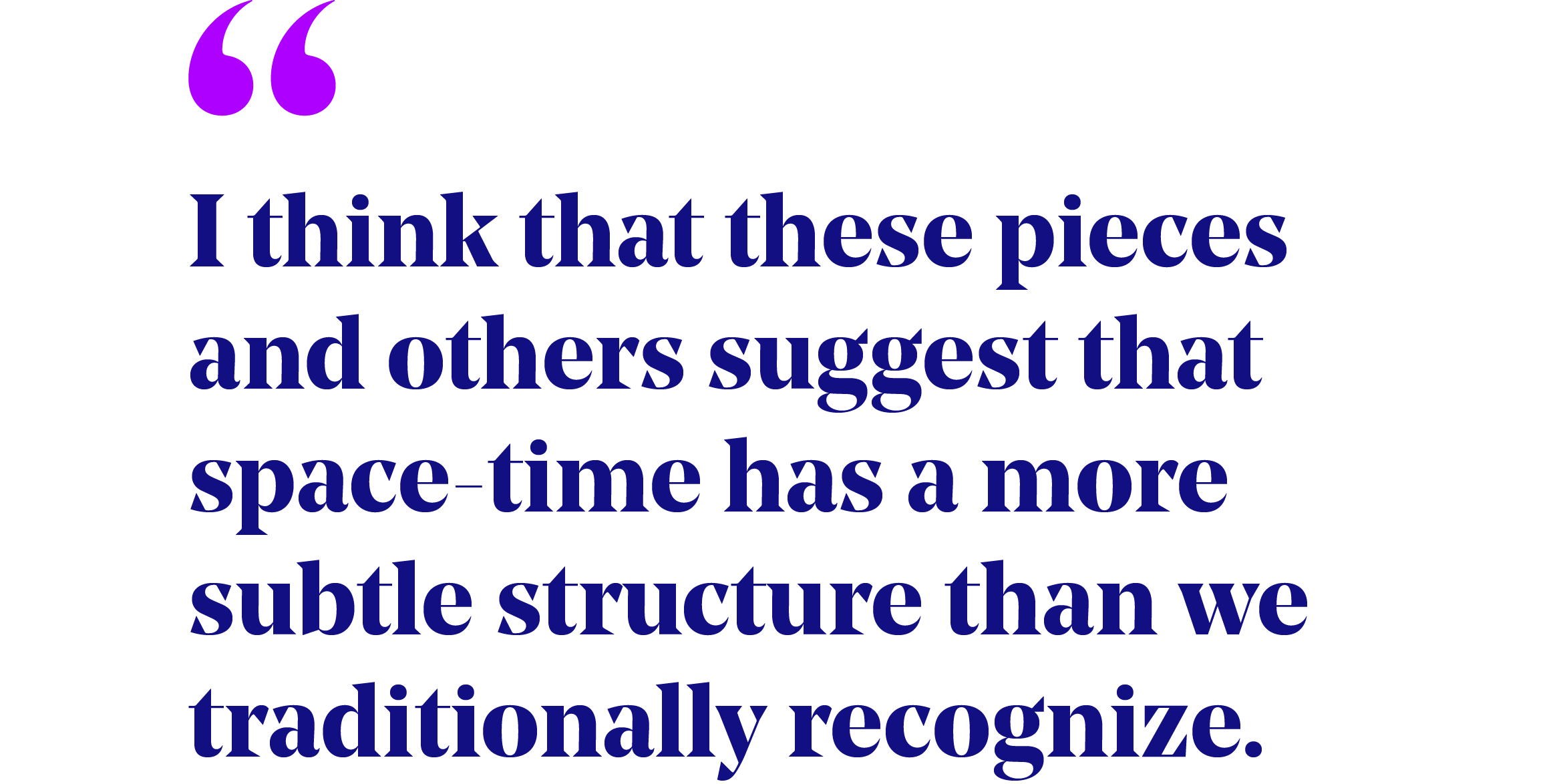
And what hints make you think we should keep space-time closer to its current, fundamental form?
There are a bunch of puzzle pieces. One is that fermions — those are matter particles like electrons and quarks — interact with space-time in a funny way. If you spin them around once, they actually don’t come back to their initial state. Instead, you have to turn them around two times. In this and other respects, it’s as if space-time has a twofold structure that only fermions can see.
And then another key piece is twistor space.
What’s that?
It’s a mathematically equivalent, alternative picture of ordinary space-time. There’s a way of taking physical phenomena in space-time and describing them in twistor space, or vice versa. Roger Penrose got very excited about this in the ’60s and ’70s, because certain physical calculations become dramatically simplified over there.
But there’s always been this mysterious aspect of twistor space, related to the fact that certain particles can be either “right-handed” or “left-handed,” depending on whether they move through space in the same direction that their spin is pointing or in the opposite direction. Twistor space most naturally describes theories of purely right-handed or purely left-handed particles, rather than realistic theories with both types of particles interacting with one another.
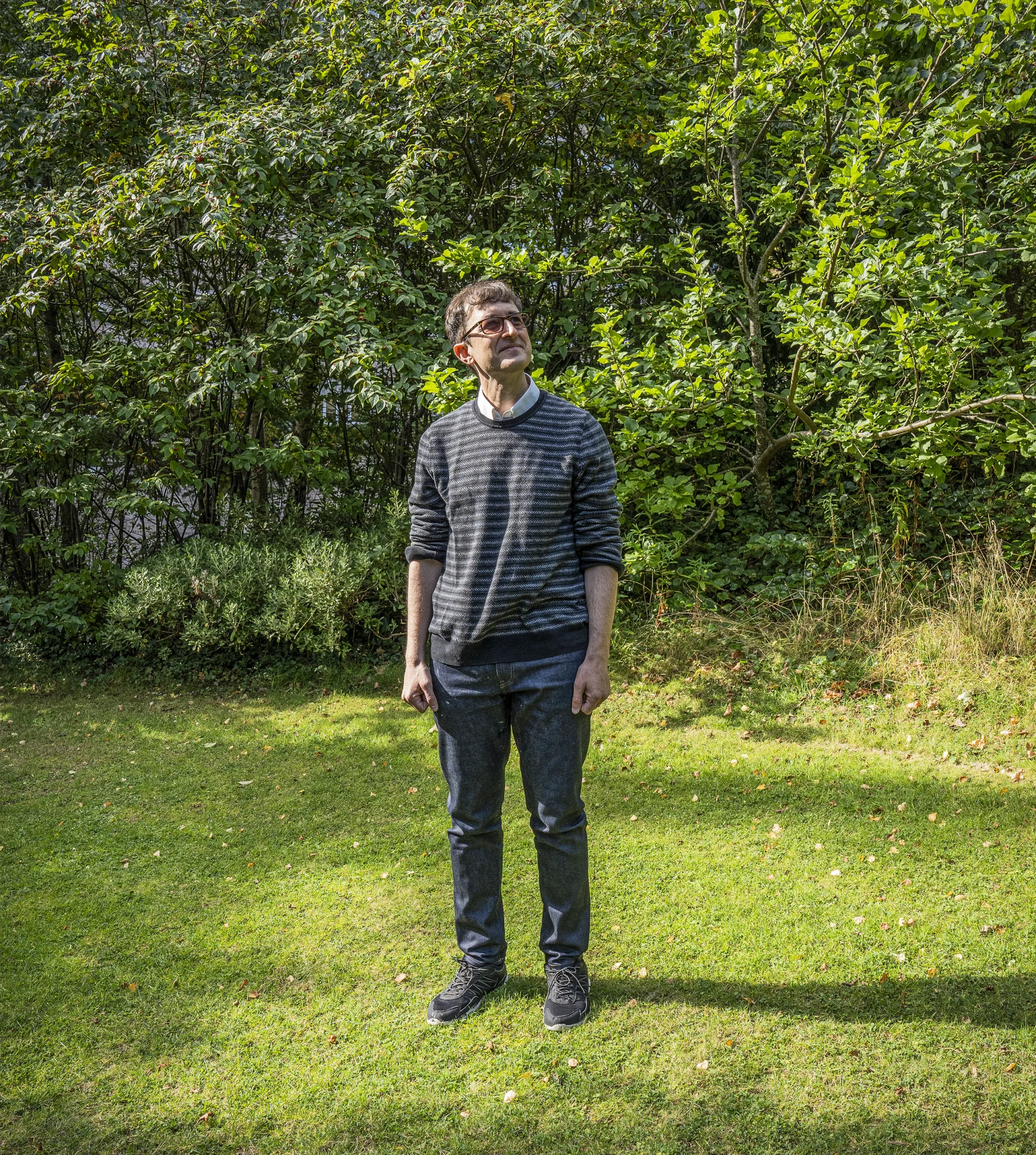
Boyle on the university grounds.
Sophie Gerrard for Quanta Magazine
So fermions see double the space-time we do, and twistor space can’t easily describe all of space-time. What do you make of that?
I think that these pieces and others suggest that space-time has a more subtle structure than we traditionally recognize. In this picture, it would consist of two “sheets,” each of which is “half” of ordinary space-time. Very roughly, the idea would be that left-handed fermions live on one sheet, right-handed fermions live on the other, and bosons — the force-carrying particles of the Standard Model — live on both. So instead of thinking of twistor space as describing space-time as a whole, it would describe just one of these sheets. But we’re still working on figuring it all out.
Each fermion in the Standard Model also comes in light, medium and heavy varieties, or “generations.” Where might that extra structure come from?
For that, we bring in another puzzle piece: a beautiful and strange number system called the octonions, which are like the complex numbers, but with more imaginary components. [Editor’s note: Complex numbers are numbers that involve multiples of the “imaginary” number i, the square root of −1.] Over the years, a number of physicists have pointed out intriguing connections between the octonions and the Standard Model, suggesting that the octonions may help explain patterns like the three generations.
And recently, we’ve noticed that a nice extension of the octonions, called the superoctonions, seems even more closely related to the Standard Model; they have the symmetries particles should — both space-time symmetries and internal symmetries.
In that case, what do you need twistor space for?
Well, the twistors and octonions seem to be closely linked. George Sparling in Pittsburgh and more recently Penrose have suggested a way to convert locations in twistor space into octonions. That’s intriguing and might help solve a problem we’re facing, which is that the superoctonions have too many internal symmetries. We’re hoping that working out how to convert them into “super twistors” will help us get down to exactly the Standard Model symmetries.
I can’t really convey how confusing this whole business has been, though. It seems like all these puzzle pieces are related, and we’re still futzing with them. We’ve had some partial success, but it has been frustratingly difficult to get them to all click into place at the same time.
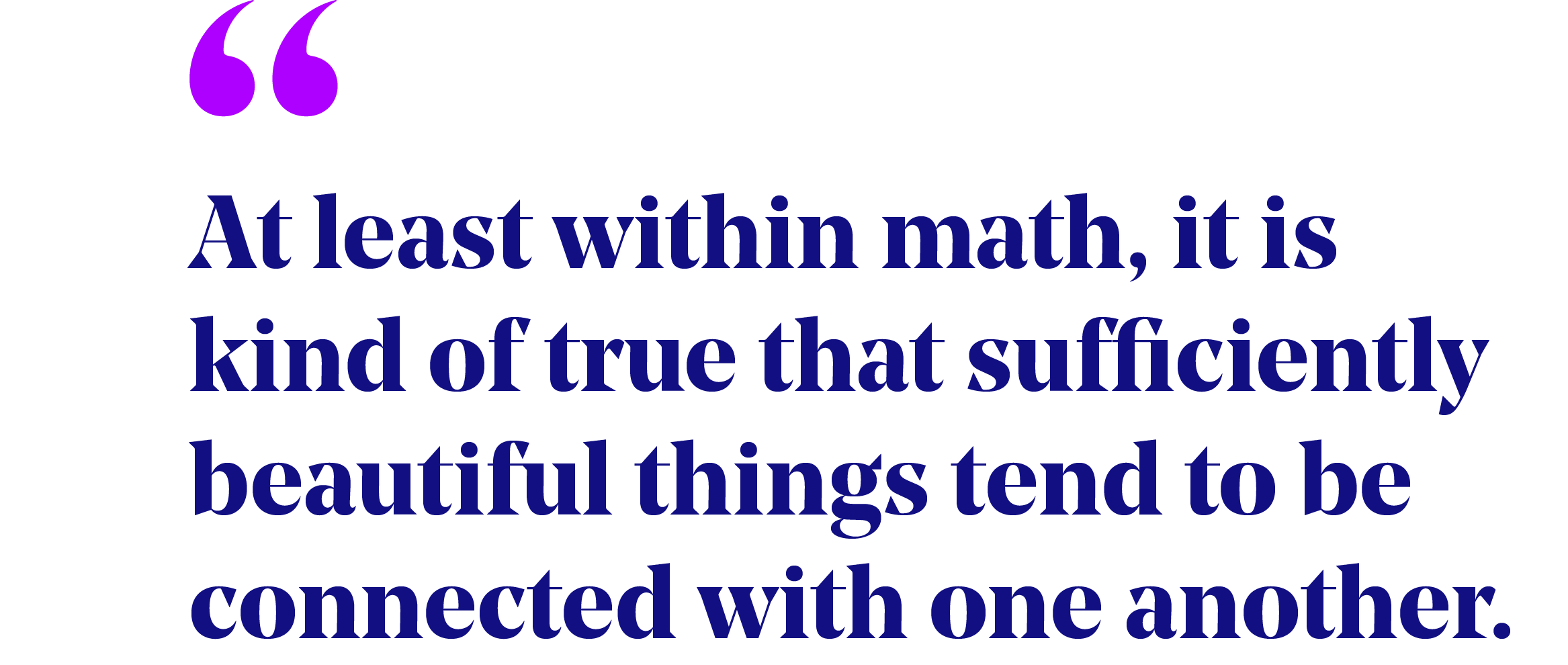
Why might this futzing make you question whether space-time really needs to be replaced?
Well, I just want to see if the ordinary continuum fabric of space-time (or a modest two-sheeted extension of it) can do the trick, before abandoning it. Innocent until proven guilty.
Also, twistor space seems to play a key role, and on the twistor side everything is described by calculus with complex numbers, which is one of the most beautiful parts of mathematics. Everything is absolutely glorious there, while doing calculus with real numbers is actually gross. That was one of Penrose’s key motivations, to move physics into this domain where everything behaves really nicely.
If we could achieve that dream with this two-sheeted picture or some other twistor-based picture equivalent to space-time, I wouldn’t want to do violence to it and break it up into something else.
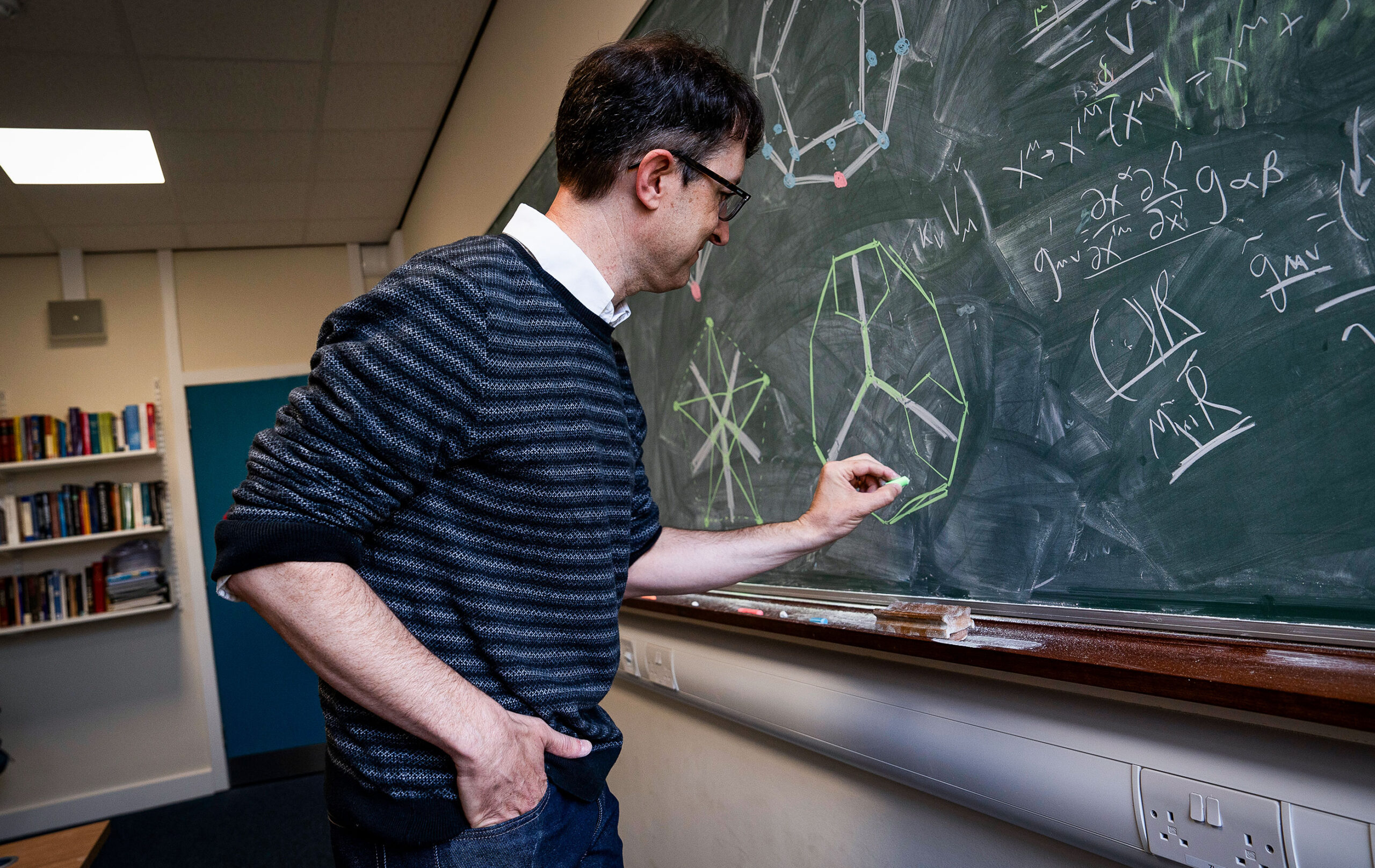
Boyle in his office at the Higgs Center for Theoretical Physics at the University of Edinburgh.
Sophie Gerrard for Quanta Magazine
Another argument physicists often make for the emergence of space-time has to do with black holes, regions of space-time so warped that nothing can escape from their interiors. Calculations by Stephen Hawking and others show that black holes have temperature and entropy. This suggests that their space-time fabric is made of many parts, like how a steaming cup of tea is made of molecules. Do you find that thinking convincing?
The black hole temperature and entropy would be among the most compelling bits of evidence that I’m aware of. I have to admit that that carries weight. I think if I were forced to place a bet, I might bet that space-time is emergent. But I would not bet very strongly.
Wouldn’t that require doing damage to those glorious complex sheets?
What can I say? On the one hand, you pushed me into a corner with rather good evidence. I mean, it’s not a proof, but the fact that all these thermodynamic phenomena keep showing up in different aspects of gravity, it is evidence.
On the other hand, it seems like an indirect and rather vague hint of what’s going on. The way that these puzzle pieces almost fit together feels a bit more concrete to me. Some of these ingredients we associate with traditional, continuum space-time just smell too good to be discarded. I suspect they’ll be preserved in whatever comes next.
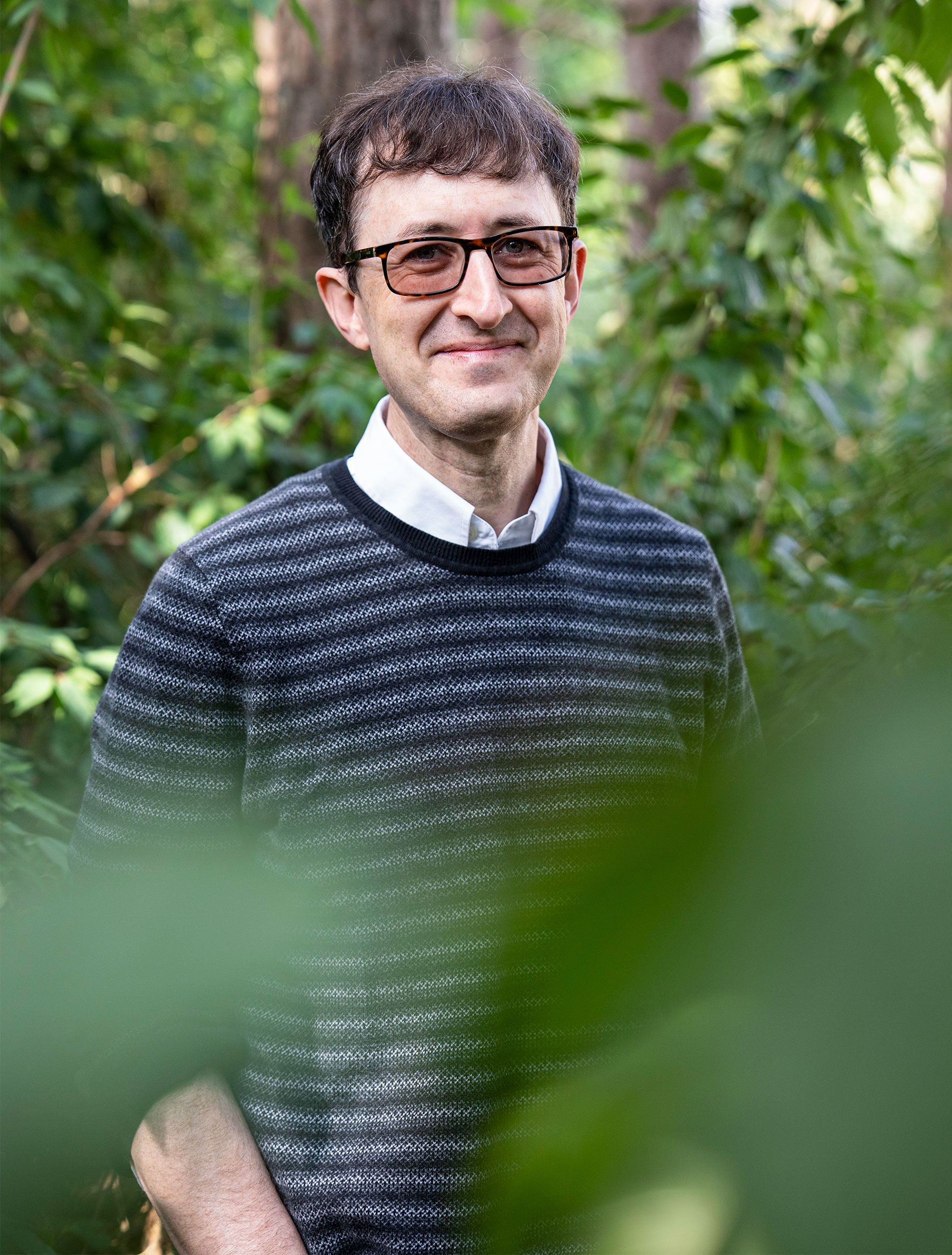
Sophie Gerrard for Quanta Magazine
From tiling patterns to octonions and twistor space, you seem to pursue a wide array of different research topics. What’s the common thread?
It might seem like I’m interested in lots of different things, but I’m not sure if they’re really all that disconnected. At least within math, it is kind of true that sufficiently beautiful things tend to be connected with one another. I don’t deny that they’re all different topics in the way we typically divide things up — but if there were a “department of beauty” these would all be standard courses in that discipline. And there would be a lot of other courses that I don’t know about yet.
As far as I know, the University of Edinburgh doesn’t have a beauty department. So how can one find all these ideas that might have subterranean connections?
Well, fortunately, people have found tons of these fascinating connections already, so maybe the key is just letting your curiosity guide you.
I used to have more rigid ideas about what I should and shouldn’t be thinking about. But I’ve increasingly come to feel that one’s curiosity is a kind of sacred thing, not to be trifled with. It’s almost like a magic power that helps you find your way to what’s most worth thinking about.
